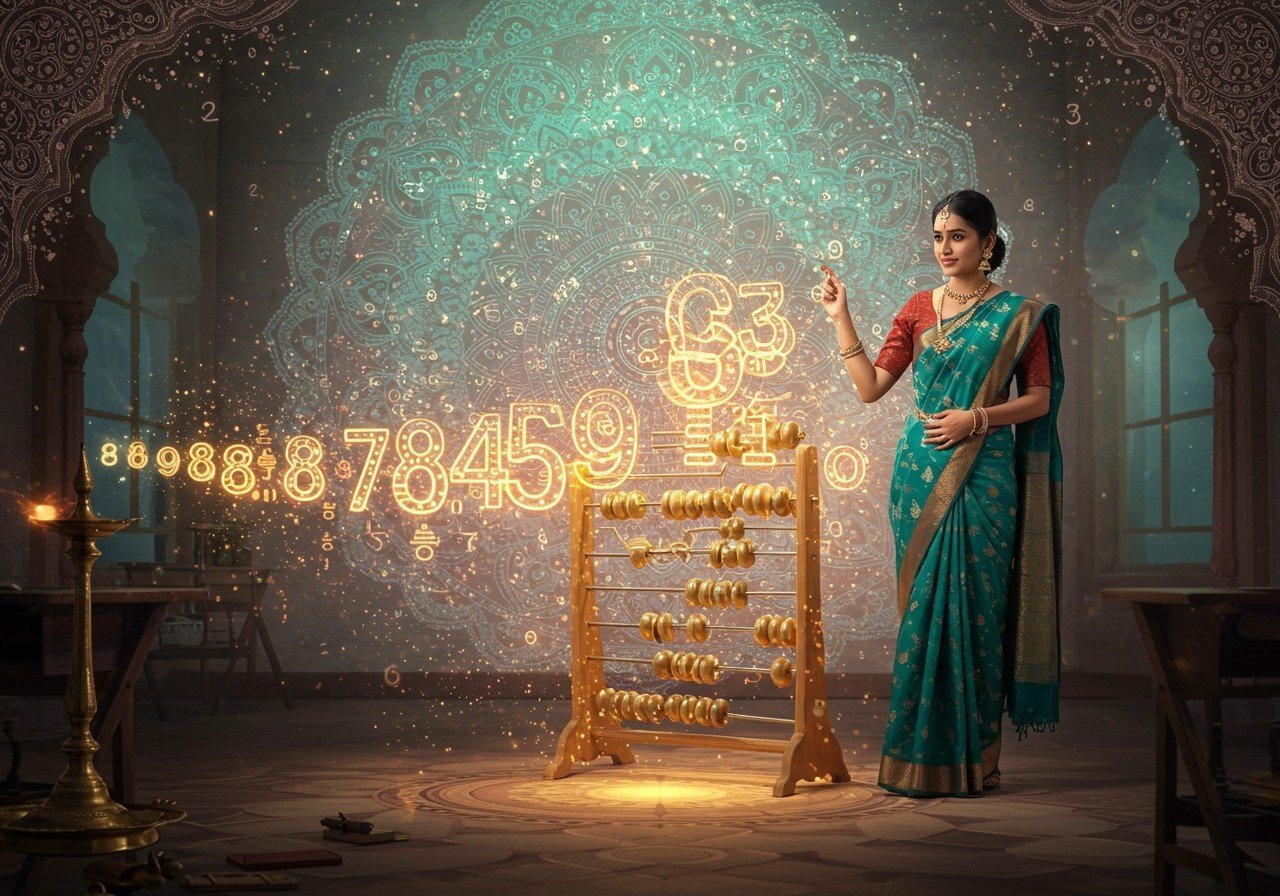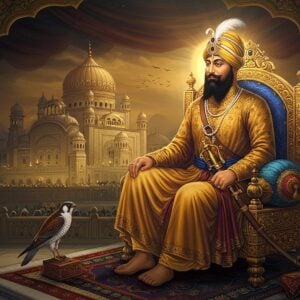
The Indian Numbering System is a distinctive and essential aspect of India’s cultural and financial landscape. It stands apart from the Western decimal system with its unique terminology and holds significant cultural weight. A grasp of terms like ‘lakh’ and ‘crore’ is crucial for navigating both traditional practices and modern transactions. This system has deep roots in Indian history and continues to be relevant in everyday life, from online shopping at sites like poojn.in to complex financial dealings.
Understanding the Foundation: Units in the Indian Numbering System
The Indian Numbering System, similar to the international system, is built upon powers of ten, but it features distinct naming conventions. The unit, or the number one, serves as the basis for comprehending larger numerical values like lakh and crore. Unlike international units, this system showcases cultural nuances in its nomenclature. The unit plays a significant role in daily exchanges, traditional rituals, and commerce. It is widely represented in financial records and digital platforms. For instance, during festivals or ceremonies, units are used to quantify offerings or expenses, demonstrating their cultural significance.
Delving into Lakhs: A Cornerstone of Indian Numbers
In India, ‘lakh’ carries considerable weight, symbolizing 100,000 within the Indian Numbering System. More than just a number, ‘lakh’ is deeply embedded in Indian society. From household budgeting to large-scale industrial planning, ‘lakh’ acts as a dependable unit of measurement. A solid understanding of ‘lakh’ is essential for anyone interacting with South Asian economies. Whether interpreting government financial reports or discussing property prices, this term frequently arises. Real estate values, for example, are often expressed in lakhs, making a firm grasp of its meaning vital.
The etymology of ‘lakh’ traces back to Sanskrit, emphasizing its long-standing presence in Indian culture. This historical context enriches everyday financial dialogues. For those unfamiliar with the system, translating ‘lakh’ into international terms can be challenging. One lakh is equal to one hundred thousand in the global context. Written as 1,50,000 rupees (for 1.5 lakh rupees), the comma placement can initially be confusing for those accustomed to different conventions. In sectors like education and healthcare, fees and costs are often quoted in lakhs. This highlights its importance in both personal finances and broader economic scenarios.
Exploring Crores: Navigating Larger Numbers in India
‘Crore’ represents 10 million (or 100 lakhs) in the Indian Numbering System, holding a significant place in India’s economic structure. Discussions surrounding large-scale projects or national budgets frequently involve ‘crore.’ Comprehending ‘crore’ is vital for anyone dealing with India’s GDP, government spending, or corporate financials. Its prevalence in political, business, and media discourse makes it indispensable for understanding Indian markets.
Historically, ‘crore’ has shaped economic policies and reporting methods, highlighting India’s distinctive approach to handling large sums in economic contexts. Written numerically, 3 crore appears as 3,00,00,000 rupees. Global businesses sometimes encounter difficulties when interpreting ‘crore,’ and translating it into the international numbering system requires careful attention. Despite these complexities, ‘crore’ remains a fundamental component of India’s financial vocabulary. In popular culture, ‘crore’ appears in idiomatic phrases and literature, emphasizing its cultural relevance. Beyond its numerical value, ‘crore’ contributes to the language shaping economic narratives.
Beyond Crores: Extending the Indian Numbering System
The Indian Numbering System extends beyond ‘crore’ to terms like ‘arab’ (1 billion) and ‘kharab’ (100 billion), used in national infrastructure projects and large-scale manufacturing. Digital platforms and financial transactions have adapted to incorporate these larger numbers. Government reports on international trade, for instance, often utilize ‘arab’ and ‘kharab.’
These terms also appear in literature and folklore, reflecting their cultural resonance. Translating them for international audiences, however, can sometimes present challenges. Understanding these extensions bridges traditional practices with modern technology, ensuring seamless integration with global financial systems while preserving India’s cultural heritage. poojn.in, as a platform deeply rooted in Indian culture, understands and utilizes the Indian Numbering System in its operations.
Shopping for Ritual Items at poojn.in
At poojn.in, we simplify the process of purchasing ritual items in traditional Indian quantities. Our Yellow Cowrie (Laxmi Koudi) shells, for example, are available in culturally significant quantities:
- 1 piece: For individual use and personal prayers.
- 11 pieces (ek-adash): Ideal for smaller puja ceremonies and home rituals. It represents a simple yet meaningful offering.
- 51 pieces (ekavan): Suitable for medium-sized ceremonies and events. This quantity signifies a more substantial offering.
- 108 pieces (ashtottar): Used for complete and elaborate religious rituals, representing wholeness and completion in Hindu traditions.
These natural yellow cowrie shells are integral to many Hindu ceremonies and pujas. Our sindoor containers are also available.
We believe in transparent pricing, displaying all product prices in Indian rupees (₹). Our website uses the familiar format of lakhs and crores when applicable, making it easy to understand and convenient for our customers. Shop with confidence, knowing you’re getting authentic ritual items in the precise quantities needed for your ceremonies. Visit www.poojn.in to explore our complete selection of puja items available in traditional Indian numerical quantities.
[Note: Prices are subject to change. Please check our website for the most up-to-date rates.]
Embracing the Indian Numbering System
The Indian Numbering System, with its ‘lakh,’ ‘crore,’ and other unique terms, forms a vital part of India’s cultural and economic identity. It bridges tradition and modernity, influencing everything from personal budgets to national economic strategies. For those interacting with Indian markets or exploring its rich culture, understanding these terms is indispensable. They not only facilitate financial discussions but also deepen appreciation for India’s heritage.
By embracing these traditional numerical terms, you connect with a time-tested system reflecting India’s deep-rooted history while adapting to the demands of modern global interactions. Whether you are managing personal finances or exploring business opportunities, the Indian Numbering System offers clarity and precision.
As you continue your exploration of the Indian economy or engage with its vibrant culture, remember these terms—they are more than just numbers; they are a testament to India’s enduring legacy and its progressive spirit.
FAQs: Clarifying Lakhs, Crores, and More
What is the Indian Numbering System? The Indian Numbering System is a method of grouping numbers using terms like lakh (100,000) and crore (10,000,000) to represent large values, diverging from the Western usage of thousands, millions, and billions. It’s deeply ingrained in Indian culture and commerce. It impacts daily transactions, financial reporting, and even cultural expressions.
How does the Indian Numbering System progress beyond a crore? After a crore, the system extends to arab (10 crore or 1 billion), kharab (100 crore or 10 billion), neel (1,000 crore or 100 billion), padma (10,000 crore or 1 trillion), and so on. These larger denominations are typically used in contexts like national budgets, infrastructure projects, and large-scale financial reporting. Understanding these extensions provides a complete picture of the Indian Numbering System’s capacity to represent vast quantities.
What is the significance of a lakh in the Indian Numbering System? A lakh, equivalent to 100,000, is a key denomination in the Indian system, positioned between thousand and ten lakh (1,000,000). It’s commonly used in various financial transactions, salary discussions, and expressing quantities of goods. Its prevalence highlights its importance in everyday life and commerce within the Indian subcontinent.
What is the relationship between lakhs and crores? One crore is equal to 100 lakhs. Since a crore represents 10,000,000 and a lakh represents 100,000, the conversion becomes straightforward. This relationship is essential for understanding large financial figures and economic data presented in the Indian format. It helps in quickly converting between lakhs and crores for better comprehension.
Why does India use lakh and crore instead of million and billion? The terms ‘lakh’ and ‘crore’ are deeply embedded in Indian history and culture, making them more familiar to the general population than million and billion. Their continued use reflects a preference for traditional terminology and reinforces cultural identity in numerical representations. This familiarity simplifies daily transactions and makes financial information more accessible to a wider audience.
What is the fundamental unit in the Indian Numbering System? The fundamental unit in the Indian Numbering System is 1, similar to the international system. It serves as the basis for building all larger numbers. It’s the foundation upon which the entire system rests, allowing for the representation of any quantity from the smallest to the largest denominations.
How is numerical notation handled within the Indian Numbering System? The Indian Numbering System uses commas differently compared to the Western system. For instance, 10,00,000 represents ten lakh (1 million), while 1,00,00,000 represents one crore (10 million). Understanding this distinct comma placement is crucial for correctly interpreting written numbers. It prevents confusion and ensures accurate understanding of financial figures and other numerical data.
What follows lakh in the sequence of the Indian Numbering System? Ten lakh (1,000,000) comes after one lakh (100,000) in the Indian Numbering System. Ten lakh is also equivalent to one million in the international system. This hierarchical structure allows for the clear and organized progression of numerical values. Recognizing the sequence helps in comprehending the scale and magnitude of different quantities within the Indian system.
For authentic puja items and a culturally relevant shopping experience, visit poojn.in.


